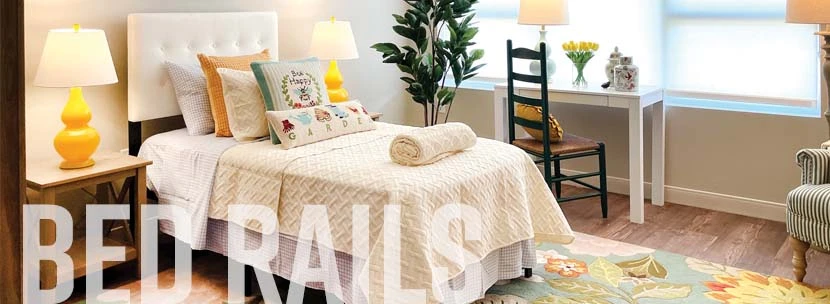 April 16th, 2024
April 16th, 2024

What are the Safety Concerns of Using Bed Rails in Assisted Living and Memory Care?
Bed rails are prohibited in nursing homes because they are unsafe and pose a risk to residents, particularly those who are prone to falls or have cognitive impairments. There have been cases where residents have become trapped or injured by bed rails. Additionally, bed rails can limit residents' mobility, hinder their independence, and cause feelings of confinement. As a result, nursing homes have implemented alternative measures such as fall prevention programs, regular monitoring, and bedside alarms to prioritize residents' safety and well-being while also promoting their comfort and autonomy.
Both the Food and Drug Administration (FDA) and the Long-Term Care Community Coalition (LTCCC) acknowledge safety issues with the use of bed rails in nursing homes. Even when bed rails are properly designed, compatible with the bed and mattress and used appropriately, they can still present a hazard to individuals with physical limitations or mental issues.
What are the Risks Associated with Bed Rails In Senior Housing?
The FDA lists several safety risks associated with the use of bed rails including: - When people become caught in the rails or between the bed rails and mattress, a range of injuries can occur, including suffocation and strangulation. - Serious injuries result from falls when people climb over rails. - Skin bruising, cuts and scrapes are common with bed rails. - When bed rails are used as a restraint, some people can become seriously agitated. - Feelings of isolation and claustrophobia can result with bed rail use. - Bed rails prevent people who are able to get out of bed from performing routine activities.What are the Alternatives to Bed Rails In Assisted Living?
There are many options for safely providing a bed without bed rails. The FDA offers the following:
- Reassure residents and their families that in many cases they can sleep safely without bed rails. Use beds that can be raised and lowered close to the floor to accommodate both occupant and caregiver needs.
- Keep the bed in the lowest position with wheels locked.
- When the person is at risk of falling out of bed, place mats next to the bed, as long as this does not create a greater risk of accident.
- Use transfer or mobility aids.
- Monitor occupants frequently.
In cases where bed rails are allowed i.e., nursing facilities, hospitals, etc., there are federal regulations for their use, including the consideration of an appropriate alternative before installing bed rails, performing regular inspections of mattresses, bedframes and bed rails and getting informed consent from anyone using bed rails.
At American House Senior Living Communities, we follow the lead of the FDA and the LTCC and do not allow either full-length or half-length bed rails in our communities including assisted living and memory care settings. Our top priority is the health, happiness and wellness of our residents. While we provide outstanding personalized care, our commitment to safety requires strict standards for all our communities.
More to read
Let’s find your community
Maintaining a home and your health can become a challenge as you age. American House provides the care, amenities and services that make life easier. Find out how American House can help you live life to its fullest.



